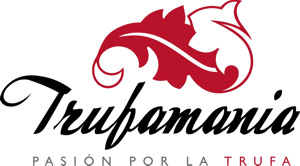TRUFFLES
What are truffles?
Truffles are fungi that live entirely underground associated with the roots of some trees, mostly oaks. Although more than 20 species of truffles are known in Europe, only a few have culinary value.
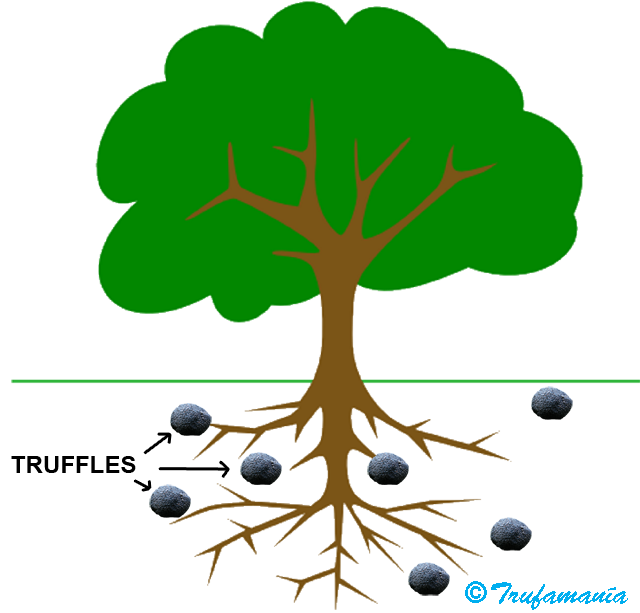
Truffles spend their entire lives under the ground and must be eaten by animals to liberate their spores, especially mammals attracted to its strong aroma.
Why are truffles so valued?
For their intense and exclusive aroma. Winter black truffles are best if used when cooking a dish, as their aroma and flavor are long-lasting.. A winter black truffle, the size of a walnut, is capable of filling a room with their strong aroma. Since the Ancient Age the truffe has been a gourmet dish.. Ancient Greeks and Romans were of the opinion that truffle has therapeutic and aphrodisiac properties.
Are truffles really an aphrodisiac?
Truffles have always had that reputation and they was consumed more by its alleged aphrodisiac virtues than for its culinary qualities. Galeno, greek physician, recommended the truffle “to produce a general excitement that predisposes voluptuousness”. Ibn Abdun ( XII century) in his treatise, “warned” against them saying: “Truffles should not be sold around the mosque, because they are a delicacy of the dissolute”. Anthelme Brillat-Savarin (1755-1826), French gourmet, writer, referred to the truffle as “The black diamond of gastronomy” and wrote: “Who ever says truffle, pronounces a great word, which awakens erotic and gourmand ideas both in the sex dressed in petticoats and in the bearded portion of humanity", “the truffle is not exactly an aphrodisiac, but it tends to make women more tender and men more likeable”. At present, it is said that some volatile component, simulates pheromones of the male wild boar, but the issue is still in the air. It is best to try and.......
Why are truffles so expensive?
Truffles are valuable because they are very rare and hard to find. It is estimated that the demand is 10 times greater than the supply. World production of truffles is insufficient to meet market demands, and the price goes up. Wild truffles are disappearing and cultivated truffles failed to lower prices.
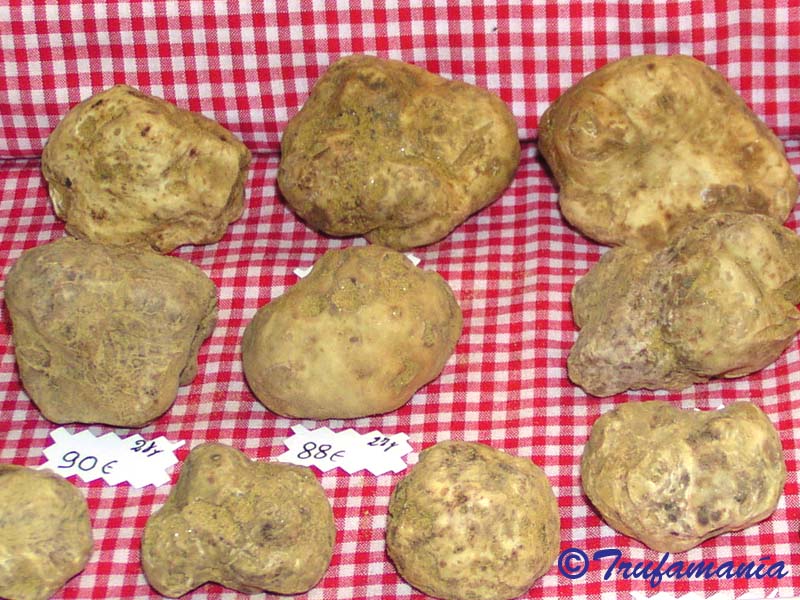
The italian white truffle (Tuber magnatum), which only grows wild, reaches US$ 3,000 a Kilogram.. Black winter truffle (Tuber melanosporum) can exceed US$ 1,000 a Kilogram.
Have cultivated truffles the same aroma?
Absolutely not! Cultivated truffles don't have the same aroma as wild truffles. Wild truffles grow under adverse conditions, adapting to Mediterranean climate with little rain in summer and having to grow to a sufficient depth to protect against drought. Sometimes we find they half a meter below ground and more. The more profound, more aroma must have to be detected by animals and better preserve this aroma.. Cultivated truffles are irrigated and worked, so they grow superficially, losing much of its aroma. The result is a more beautiful round truffle but with much less aroma.
What are the best edible truffles?
Two truffles are the best: The white Alba truffle (Tuber magnatum) and the black winter truffle (Tuber melanosporum). The remaining truffles have far less aroma. This would include: Tuber brumale, Tuber aestivum, Tuber uncinatum, Tuber mesentericum, Tuber macrosporum, Tuber borchii and Tuber indicum.
TUBER MELANOSPORUM
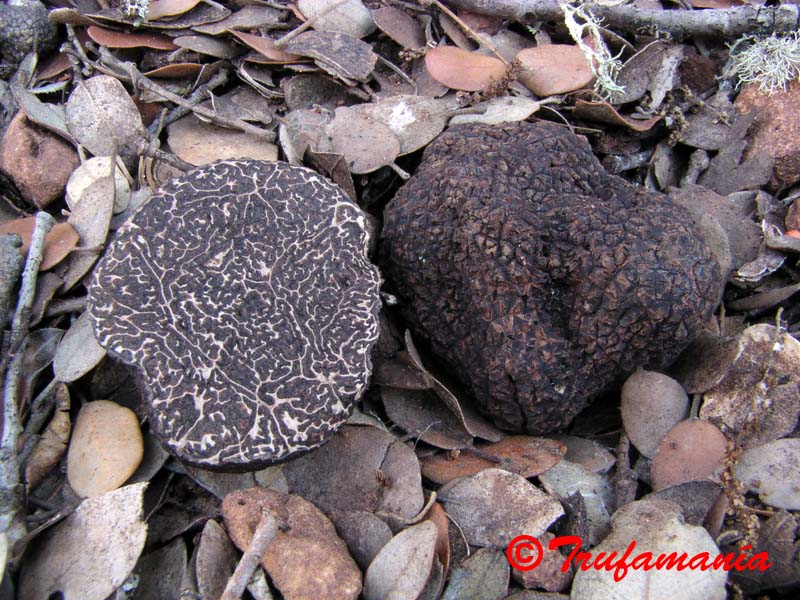
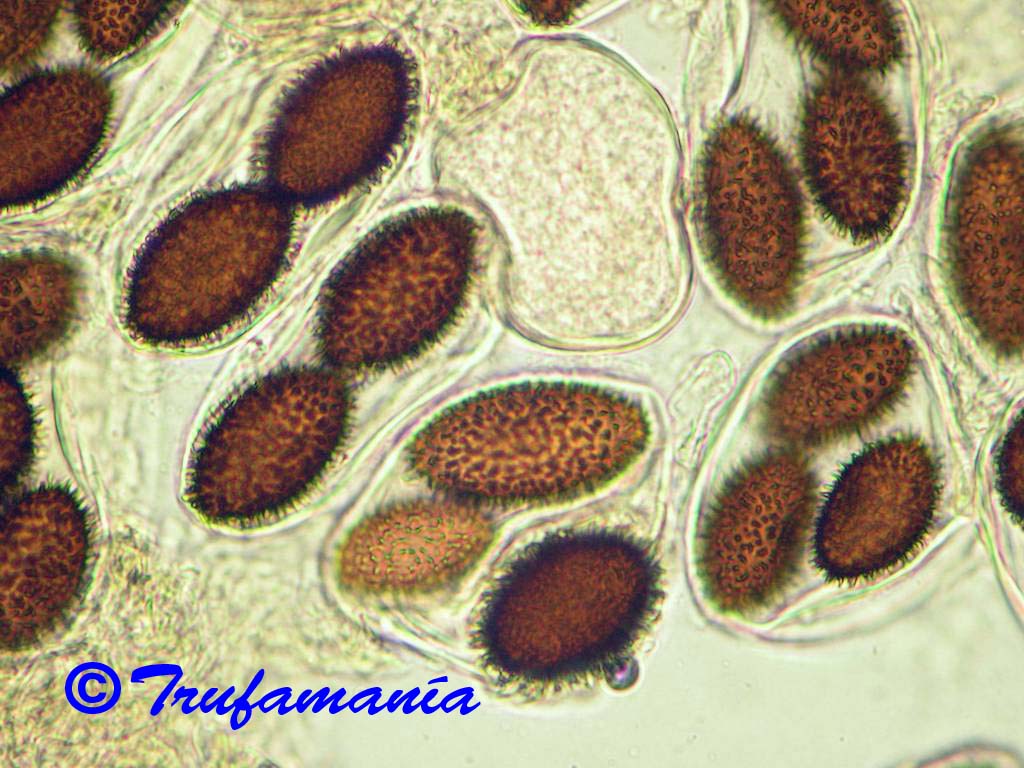
FULL DESCRIPTION This truffle is the black winter truffle, also known as Périgord truffle. There are wild and cultivated black winter truffles. The Spanish production of Tuber melanosporum represents 40% of global production. This truffle reaches a price of 1,000 euros a kg.
Black winter truffles vary in size from a pea-size to a tennis ball or bigger, and can weigh up to 1 kg. Its aroma is intense and persistent, variable and difficult to define. Always use black winter truffles if cooking the truffle as the aroma are deeper and longer lasting than the white truffle. Its appearance is unattractive: They are externally coated with brown-black warts, sometimes reddish at the base. The inside of the truffle is purplish-black and streaked with white veins.
Black winter truffles are associated with the roots of oaks and hazels in limestone terrains. They ripen from December to March. Harvesting is regulated by spanish law and must be conducted by specially-trained dogs. Digging must be carried out with the aid of a special tool, called "truffle knife".
TUBER MAGNATUM
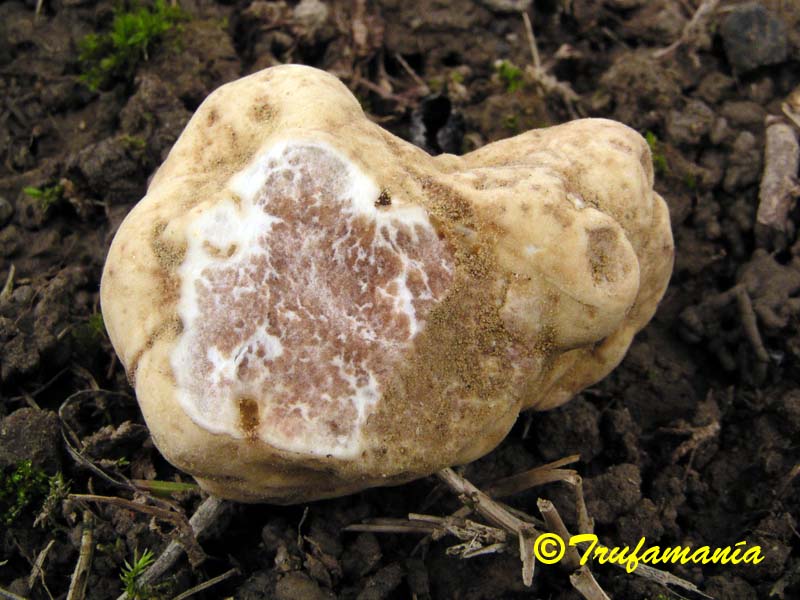
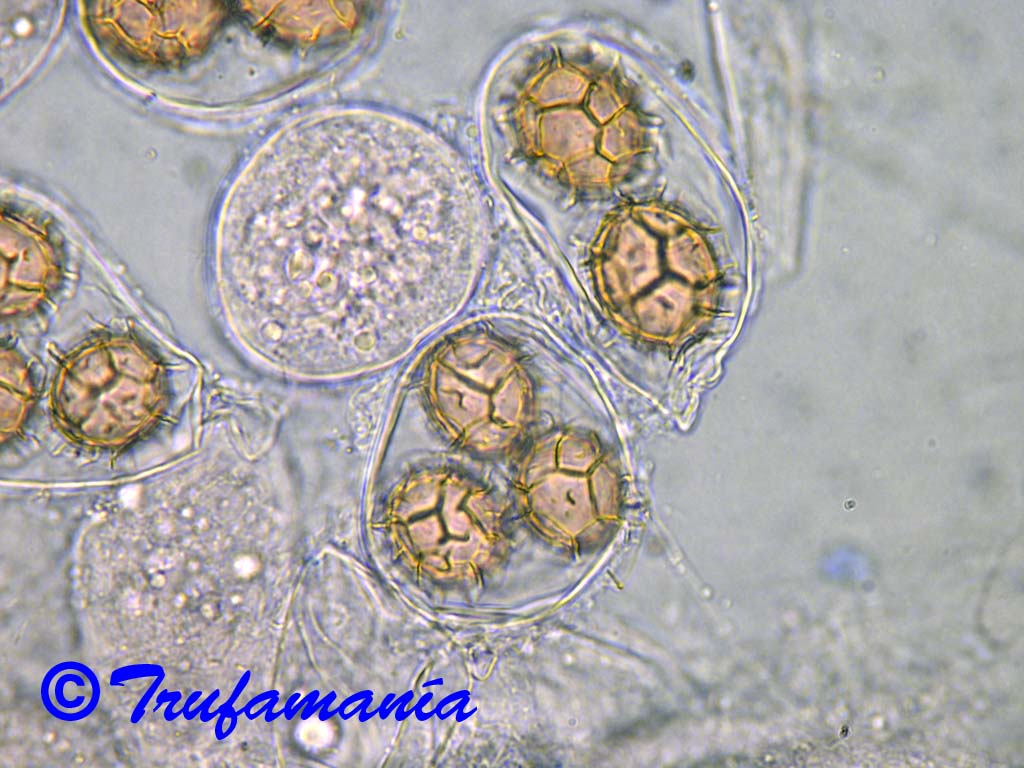
FULL DESCRIPTION The white Alba truffle grows wild only in some regions of Italy and in Istria. This truffle is very rare and efforts to cultivate them have failed. So, white truffles are the most expensive truffles in the world and depending on the harvest they can go up to 4000 U$ a kilo and more. Their season is very short, from late September to late November, according to region.
White truffles vary in size from a walnut to a fist. They have a smooth surface, lightly velvety, pale ochre to dark cream or greenish. Its flesh or “gleba” is darker, reddish brown, with a tenuous white veining. It is a very delicate truffle and it spoils in a few days. Its aroma, a mixture of methane gas and garlic, is very volatile and therefore, delicate white truffles are best when not cooked at all, but shaved raw over your favorite dish. The World white truffle of Alba auction is held every year in the castle of Grinzane Cavour. Truffles reach record price in this auction, well above their real price.
TUBER AESTIVUM
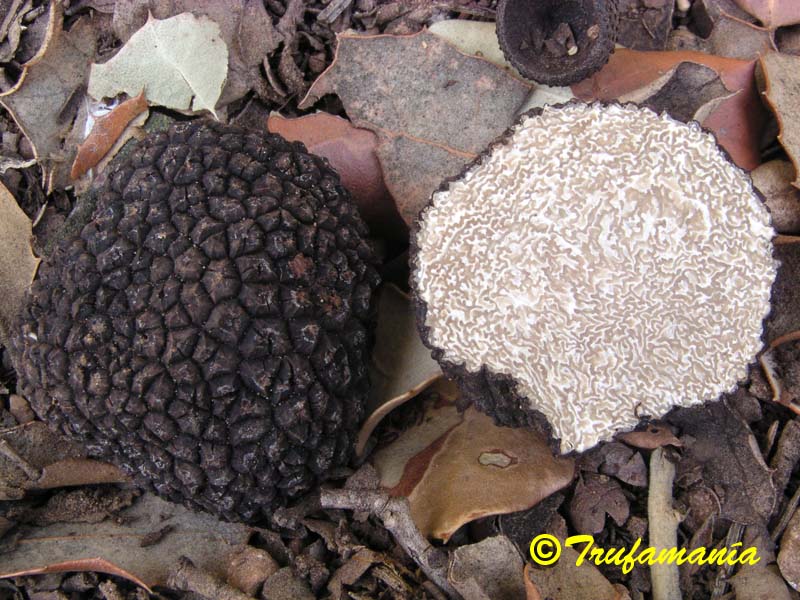
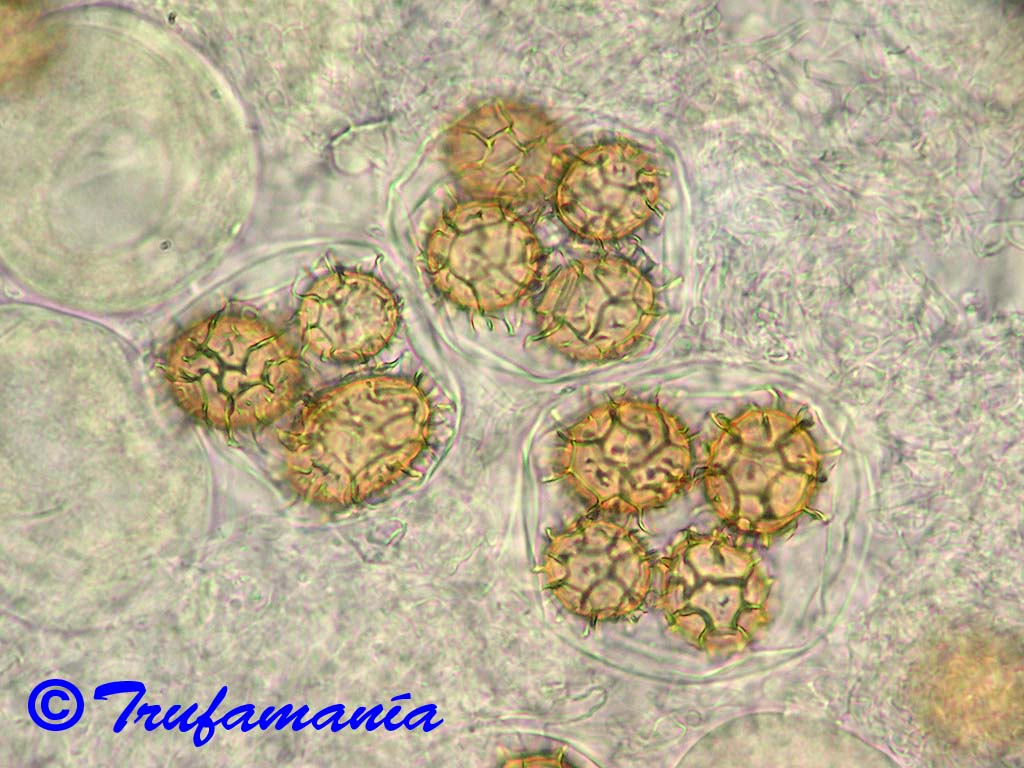
FULL DESCRIPTION Black summer truffle, also called "Truffe de la Saint-Jean". It looks externally like the black winter truffle but warts are larger and it is beige inside, marbled with white meandriform veins. This is the most common truffle and can be found throughout Europe from May to September. Its aroma is very different and delicate than the black winter truffle, but its lower price and virtually all year availability, makes this truffle a very good choice for testing new recipes. Summer black truffles are great for beginners and experts.
TUBER UNCINATUM
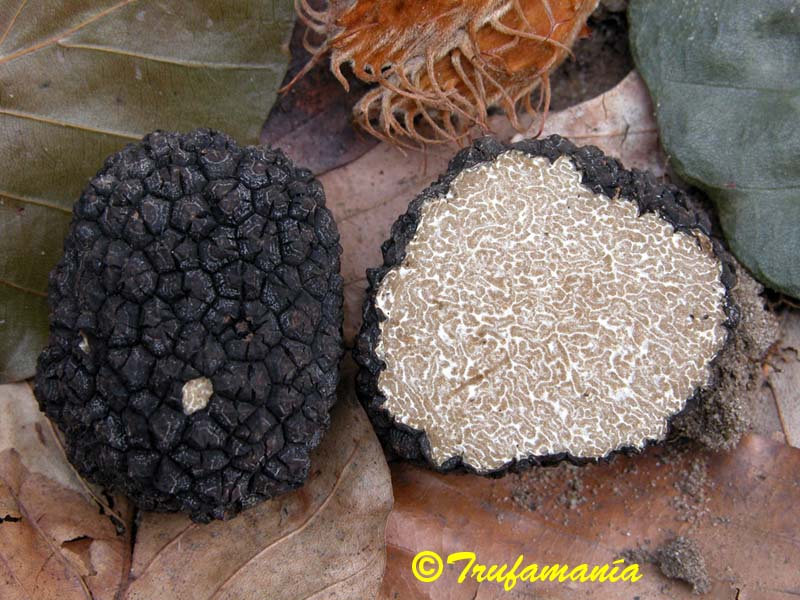

FULL DESCRIPTION Burgundy truffle. This is the autumn variety of Tuber aestivum. Its period of ripeness is from October through January. It has a more pronounced flavor and aroma than summer truffles. One could not distinguish between a summer truffle and a Burgundy truffle. In fact, molecular analysis showed no differences between them. In France, you can only legally collect Burgundy truffle from September 15 to January 15 to avoid confusion with summer truffles. Its appearance is similar to Tuber aestivum but with darker brown color inside due to greater maturity.
TUBER MESENTERICUM
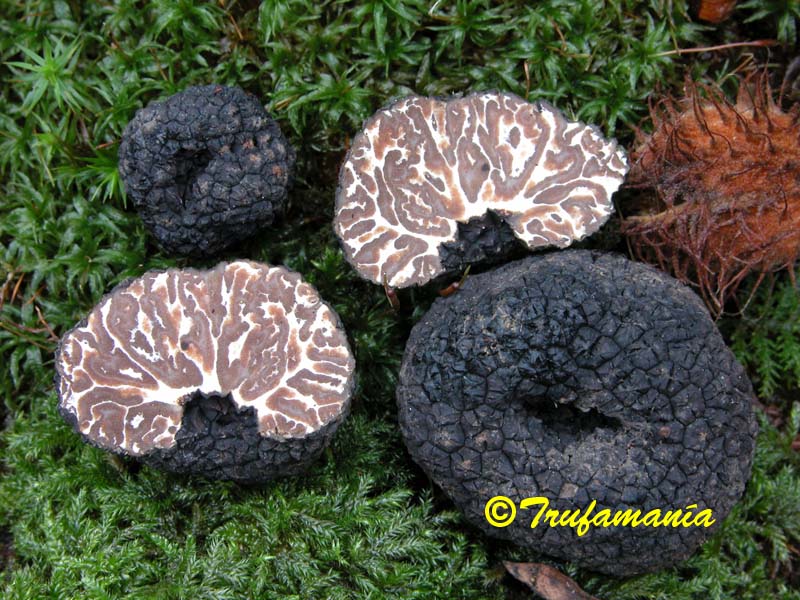
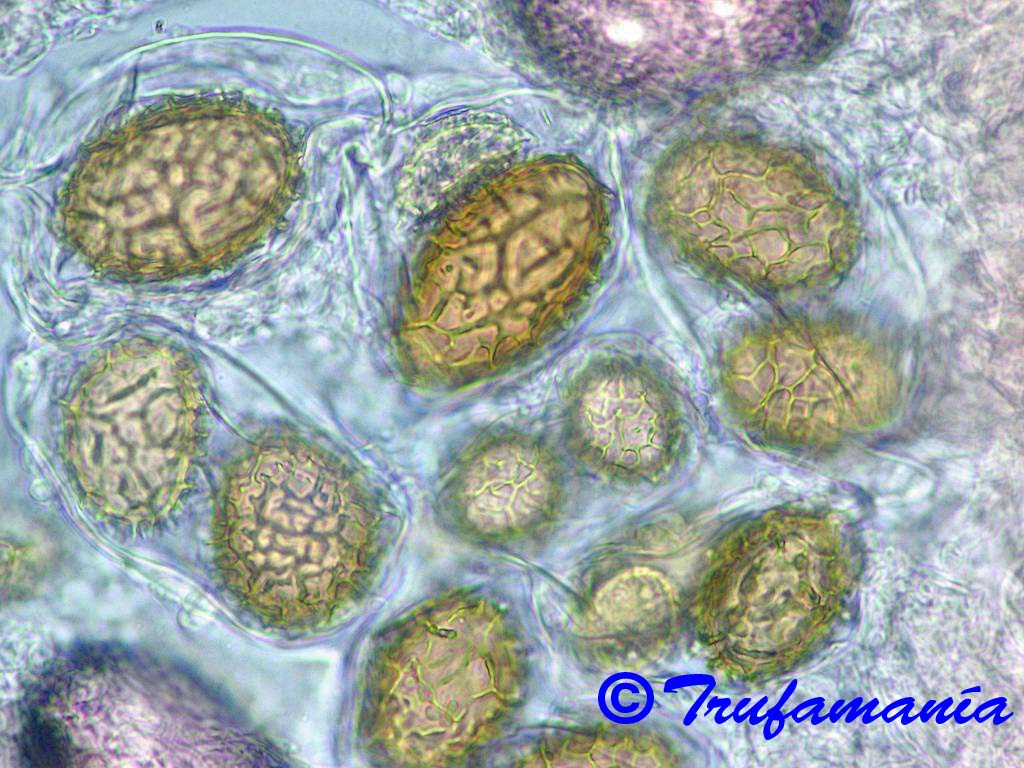
FULL DESCRIPTION Bagnoli truffle. Its appearance is similar to Tuber uncinatum and ripens at the same time. Truffles are small, 2 to 5 cm with a cavity in the base. The most characteristic feature is its pervasive smell of phenol or tar. This flavor persists even after cooking, and so many people don't like Bagnoli truffle. Although bitter in taste, this truffle is well married with certain dishes. It's hard to find in the market.
TUBER BRUMALE
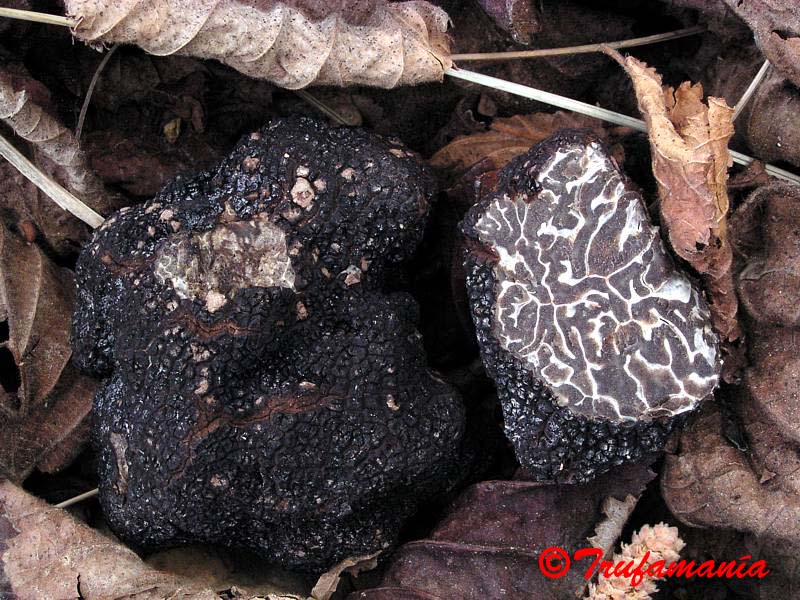
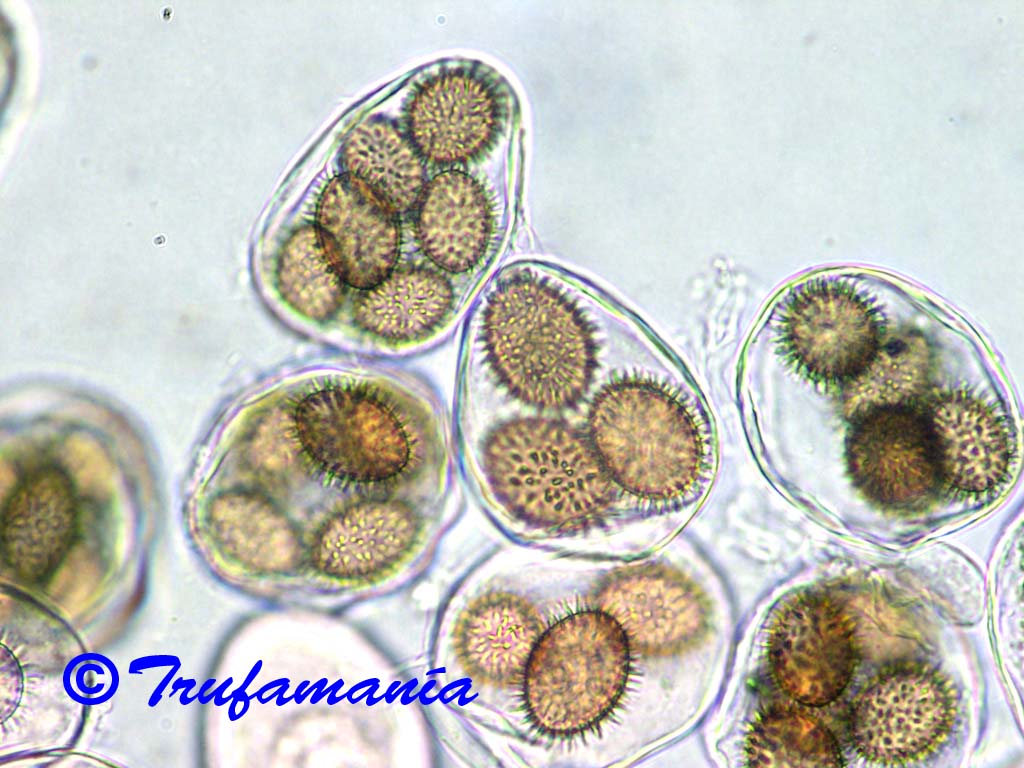
FULL DESCRIPTION Winter truffle is very similar in external appearance to the Tuber melanosporum, although the interior is greyish brown, and with sparse, broad, whitish veins. Its skin peels off easily when brushed. Winter truffle ripens at the same time and habitat as Tuber melanosporum, but prefers moist sites. The aroma is lightly musky and less persistent.
TUBER INDICUM
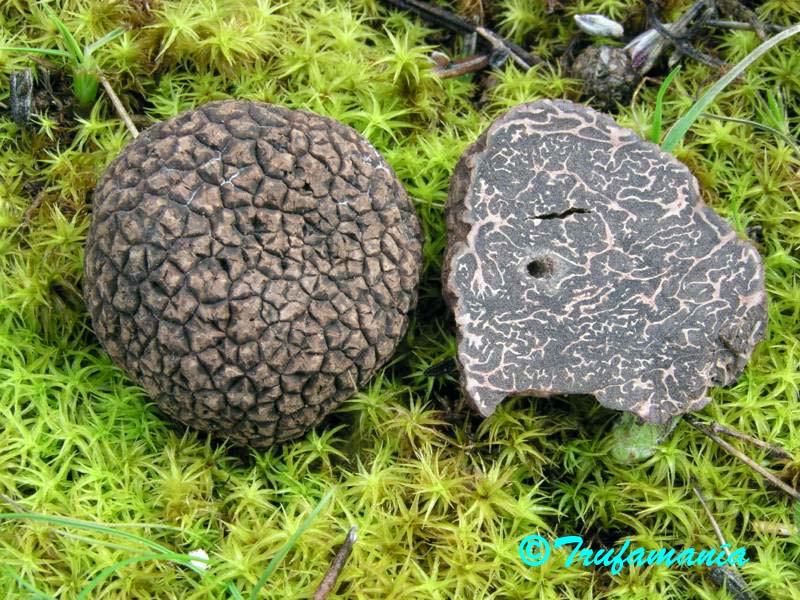
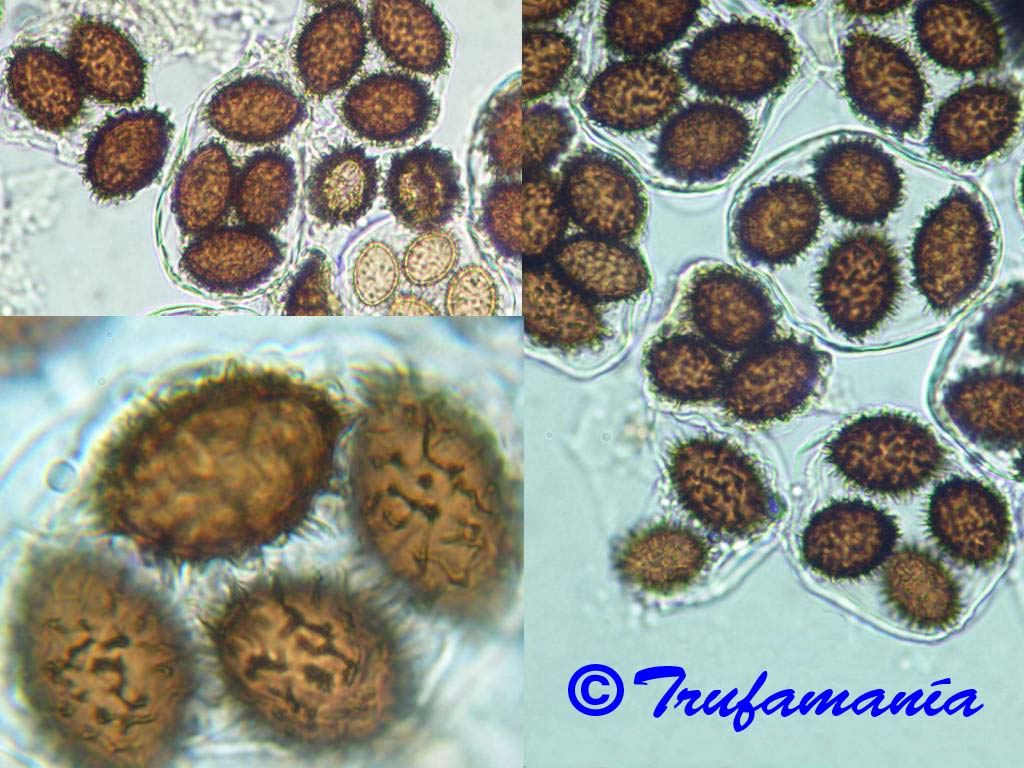
FULL DESCRIPTION Chinese truffle. This truffle is cheap and available in large quantities during the winter truffle season. It is sold fresh and preserved. We can also find Chinese truffles with the names of Tuber himalayense, Tuber pseudohimalayense and Tuber sinense. They look like Tuber melanosporum, but has no aroma and the texture is chewy. Molecular studies separate Tuber himalayense from Tuber indicum, but with the current taxonomic confusion there is no guarantee that the label on the tin is what exactly is in the tin.
TUBER BORCHII
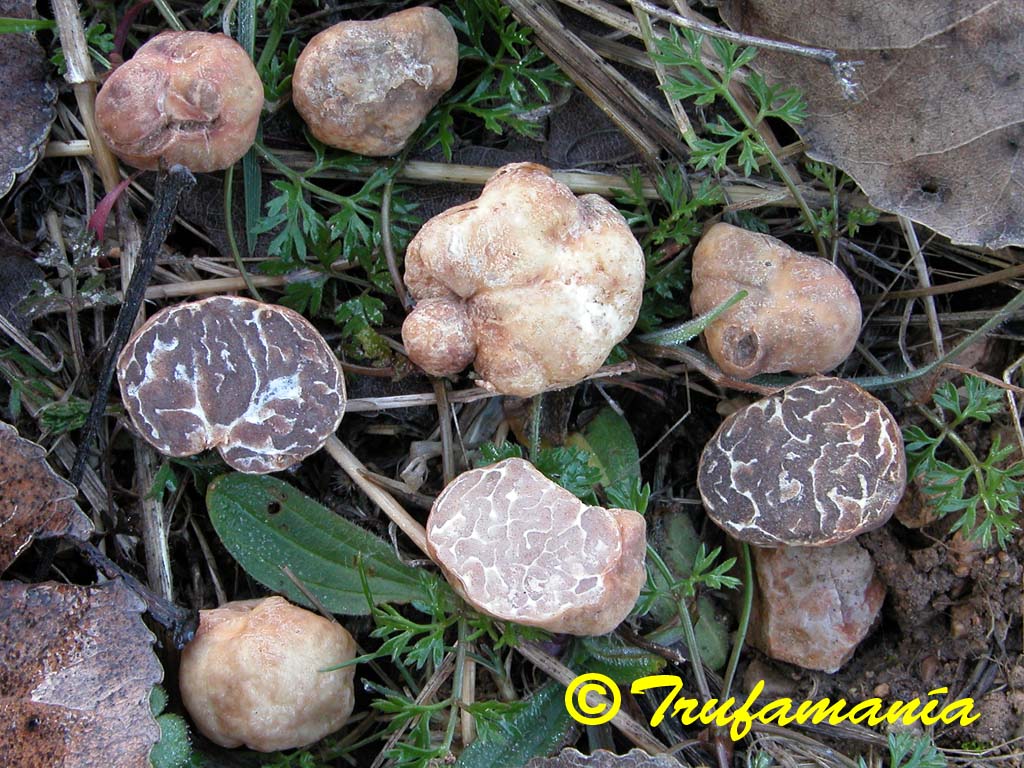
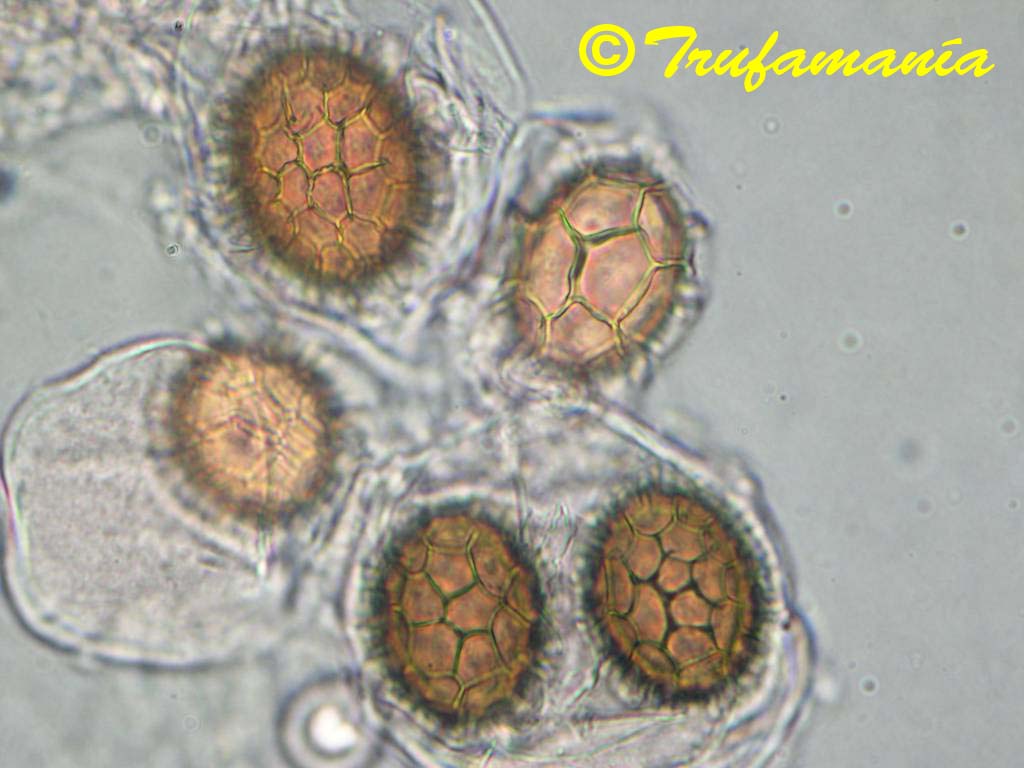
FULL DESCRIPTION Tuber albidum. It is a white truffle commonly known in Italia as bianchetto or marzuolo truffle. It ripens from January to April. It looks much like the Tuber magnatum but is much smaller and the flavor is completely different, although it also has a rather strong alliaceus aroma.
TUBER MACROSPORUM
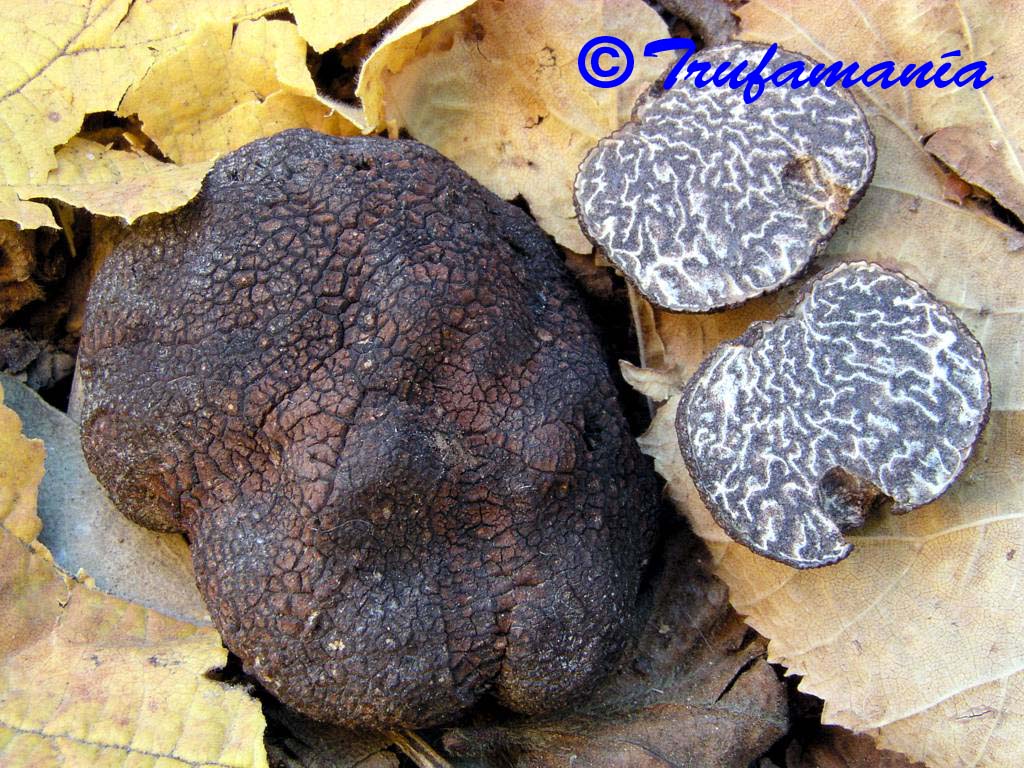
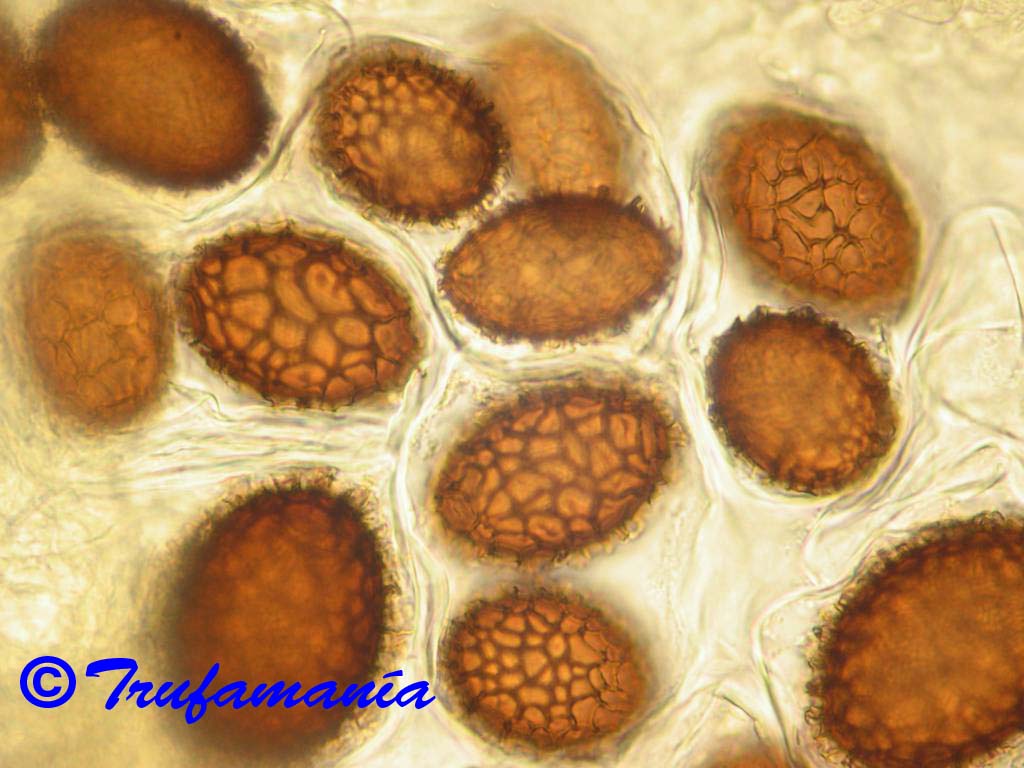
FULL DESCRIPTION Smooth black truffle. It is very common truffle in Italy. It is harvested at the same time and in the same area as Tuber magnatum from September to December. Tuber macrosporum has a similar aroma and flavor to Tuber magnatum, but its appearance is totally different. It is externally reddish brown to black and. Dark brown inside with white veins.
LINKS
• https://www.hongoshipogeos.es Paco Sáinz and Pasaban Website about hypogeous fungi (Spanish)
• https://micofora.com/blog/ The most recent news about truffles (Spanish)
• http://www.museodelatrufa.com The first national museum dedicated to truffles in Spain (Spanish)
• http://www.grossestruffes.com French forum on everything related to truffles and their cultivation (French)
• http://www.natruffling.org/ North American Truffling Society. The mission of NATS is to enhance the scientific knowledge of North American truffles and truffle-like fungi, and promote educational activities related to truffles and truffle-like fungi
| Antonio Rodríguez trufamania@gmail.com antonio@trufamania.com |
